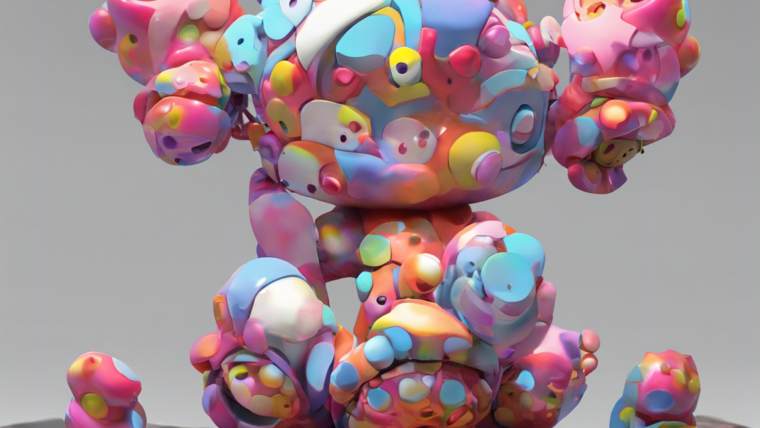Manga is a form of Japanese comic books and graphic novels characterized by its unique art style and diverse genres. Over the years, Manga has gained immense popularity not only in Japan but also around the world. Readers of all ages are captivated by the intricate storylines, vibrant characters, and visually appealing artwork found in this medium. In this comprehensive overview, we will delve into the fascinating world of Manga, exploring its history, genres, impact, and why it continues to be a significant cultural phenomenon.
History of Manga
Manga has a rich and intricate history that dates back to the 12th century, with the emergence of hand-scroll paintings like the “Choju-jinbutsu-giga”, often considered the earliest form of Japanese comics. However, it wasn’t until the 18th century that Hokusai’s “Hokusai Manga” popularized the term “Manga” and laid the foundation for modern Manga as we know it today.
The post-World War II era saw a significant evolution in Manga, with artists like Osamu Tezuka being heralded as the “God of Manga” for his pioneering work in shaping the industry. Tezuka’s iconic creation, “Astro Boy,” revolutionized the Manga scene, introducing intricate story arcs and elaborate character development that set new standards for the medium.
Genres of Manga
With a diverse range of genres catering to various interests, Manga offers something for everyone. From action-packed shonen Manga aimed at young boys, to heartwarming shojo Manga targeted towards teenage girls, the possibilities are endless. Some popular genres include:
- Shonen: Known for its emphasis on action, adventure, and male protagonists.
- Shojo: Focuses on romance, relationships, and emotions, often with female protagonists.
- Seinen: Geared towards adult men, featuring more mature themes and complex narratives.
- Josei: Similar to Seinen but targeted at adult women, exploring realistic portrayals of relationships and everyday life.
- Isekai: Involves characters being transported to another world or dimension.
- Slice of Life: Showcases everyday experiences and interactions in a realistic and relatable manner.
Impact of Manga
The influence of Manga extends far beyond its originating country, shaping global pop culture and inspiring countless adaptations in various forms of media. The unique storytelling techniques, diverse themes, and visually striking art have captivated audiences worldwide, leading to a surge in Manga consumption both in print and digital formats.
Manga’s impact can be seen in the rise of cosplay events, dedicated conventions like Comic Market in Japan, and the adaptation of popular series into successful anime, movies, and merchandise. The “Manga boom” of the late 20th century further solidified its position as a cultural phenomenon, with titles like “Naruto,” “One Piece,” and “Dragon Ball” becoming household names across the globe.
Manga Around the World
While Manga originated in Japan, its appeal has transcended geographical boundaries, gaining a massive following across Asia, Europe, and the Americas. The accessibility of digital platforms and translated versions has made it easier for international audiences to enjoy Manga in their native languages, fostering a global community of enthusiasts, artists, and scholars.
In countries like France and South Korea, Manga has seen significant popularity, with local artists drawing inspiration from Japanese styles to create their unique works. The success of Manga adaptations in Hollywood and the mainstream recognition of iconic series further attest to its universal appeal and cultural significance.
The Future of Manga
As we look ahead, the future of Manga appears to be bright, with innovations in digital publishing, immersive storytelling techniques, and collaborations with other media platforms reshaping the landscape of this dynamic medium. The integration of Virtual Reality (VR) and Augmented Reality (AR) technologies promises to offer readers a more interactive and engaging Manga experience, blurring the lines between fiction and reality.
With an ever-expanding global fanbase and a constant influx of new talent pushing creative boundaries, Manga is poised to continue captivating audiences, transcending cultural barriers, and cementing its status as a beloved art form with limitless storytelling potential.
Frequently Asked Questions (FAQs)
Q1: What makes Manga different from Western comics?
A: Manga is characterized by its distinctive art style, reading direction (right to left), and diverse genres that cater to a wide range of audiences. Additionally, Manga often features more intricate storylines and character development compared to traditional Western comics.
Q2: How can I start reading Manga?
A: There are various online platforms like Crunchyroll, MangaPlus, and VIZ Media where you can access a wide selection of Manga titles. You can also visit local bookstores or libraries that offer Manga volumes for purchase or borrowing.
Q3: Are there age restrictions on reading Manga?
A: While Manga is primarily targeted at different age groups with genres like shonen, shojo, seinen, and josei, there are no specific age restrictions. Readers of all ages can find suitable Manga titles based on their interests and preferences.
Q4: What are some must-read Manga titles for beginners?
A: Popular beginner-friendly Manga titles include “Death Note,” “My Hero Academia,” “Attack on Titan,” “Fruits Basket,” and “One Punch Man.” These series offer a good introduction to the diverse world of Manga with engaging storylines and captivating characters.
Q5: How has the digital age impacted the Manga industry?
A: The digital age has revolutionized the Manga industry, making it easier for readers to access titles online, discover new series, and interact with fellow enthusiasts through online communities and forums. Digital platforms have also enabled global distribution and simultaneous releases of Manga chapters, reducing barriers to entry for international audiences.
Q6: Can I create my own Manga series?
A: Yes, aspiring artists and writers can create their Manga series and publish them through platforms like Webtoon, Tapas, or by self-publishing physical copies. Building a following through social media and participating in contests can help in gaining visibility and recognition within the Manga community.
Q7: Are there opportunities for academic study and research in the field of Manga?
A: The study of Manga has gained traction in academic circles, with universities offering courses and programs focusing on Japanese literature, pop culture, and visual storytelling. Scholars can explore themes like gender representation, cultural identity, and historical narratives through the lens of Manga.
Q8: What role does Manga play in preserving Japanese cultural heritage?
A: Manga serves as a reflection of Japanese culture, traditions, and societal values, preserving elements of folklore, history, and contemporary issues within its narratives. It acts as a medium for cultural expression, artistic innovation, and promoting cross-cultural understanding and appreciation.
Q9: How do I support Manga creators and the industry?
A: You can support Manga creators and the industry by purchasing official merchandise, attending conventions and events, subscribing to legal streaming services, and promoting ethical consumption practices. Respecting copyright laws and crediting artists for their work also contribute to sustaining the Manga ecosystem.
Q10: What are some upcoming trends in the world of Manga to watch out for?
A: Emerging trends in Manga include the rise of webcomics, interactive storytelling formats, diverse representation of characters and themes, and collaborations across different mediums like animation, gaming, and merchandise. Keep an eye out for experimental genres, cross-genre fusion, and innovative storytelling techniques that push the boundaries of traditional Manga narratives.


